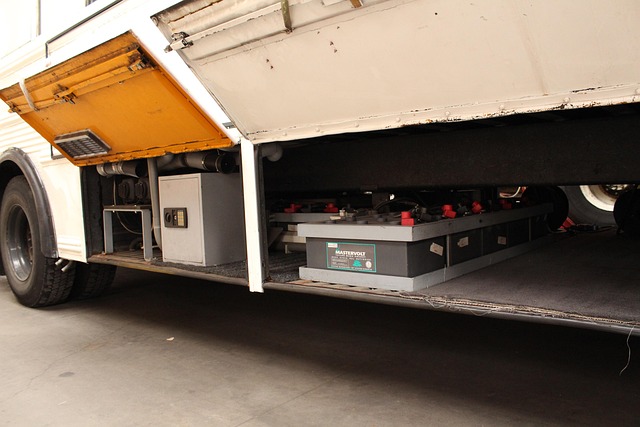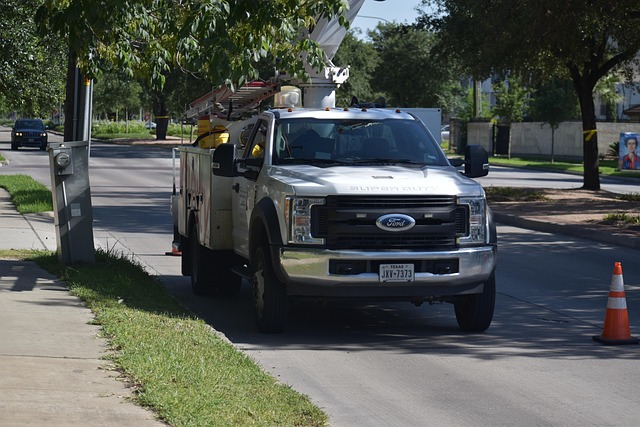Looking to register your car in California? This comprehensive guide breaks down the process step-by-step. From understanding essential requirements to gathering all necessary documents, you’ll learn what it takes to navigate the DMV efficiently. Key aspects include verifying vehicle identity (VIN) and title history, ensuring a smooth registration experience. By following these clear instructions, featuring insights from California’s DMV guidelines, you’ll be on your way to securing your vehicle’s official paperwork promptly. Don’t forget to utilize a reliable DMV VIN verifier for added peace of mind.
- Understand California Car Registration Requirements
- Gather Necessary Documents for Car Registration
- Visit or Contact the DMV for Car Registration
- Verify Vehicle Identity (VIN) and Title History
- Complete and Submit Your Car Registration Application
Understand California Car Registration Requirements

Before registering your car in California, it’s crucial to understand the state’s specific requirements. The California Department of Motor Vehicles (DMV) mandates that all vehicles operating within the state be properly registered and bear current license plates. One essential step is ensuring your vehicle has a valid and accurate Vehicle Identification Number (VIN) verification. This process confirms the authenticity of your car’s details, including its make, model, and year.
A reliable method to achieve this is by utilizing a mobile VIN inspection or a vin verifier tool provided by the DMV. These services enable you to verify your vehicle’s history and identify any potential issues early on. By having accurate and up-to-date information, you can streamline the registration process at your local DMV office or even complete it online, making it more convenient and efficient.
Gather Necessary Documents for Car Registration

Before you start the registration process, make sure to gather all the essential documents required by the California Department of Motor Vehicles (DMV). These include your vehicle’s registration certificate from the previous state, proof of insurance, and a completed application form. One crucial document to have is the Vehicle Identification Number (VIN) verifier, which can be obtained through a simple process. You can either visit a local DMV office and request a VIN verifier or opt for a mobile vin verification service, allowing you to complete this step conveniently from your home or even while you’re on the go.
The VIN is a unique identifier for your vehicle, and having accurate and up-to-date information ensures a smooth registration process. Additionally, some DMV locations might require sight of a valid driver’s license and proof of residency within California. It’s always beneficial to check with your local DMV branch for any specific requirements they may have regarding mobile vin inspection to avoid any delays or complications during car registration.
Visit or Contact the DMV for Car Registration

To begin the process of registering your car in California, visit or contact a Department of Motor Vehicles (DMV) office. The DMV is responsible for handling vehicle registration and offers several convenient options to serve residents. You can schedule an appointment online or visit a local DMV during their operating hours.
At the DMV, you’ll need key documents including your vehicle’s title, proof of insurance, and identification. Additionally, they will perform a Vehicle Identification Number (VIN) verifier, using advanced technology to cross-reference your car’s details with state records. You can even opt for a mobile VIN verification or inspection for added convenience, ensuring the process is swift and efficient.
Verify Vehicle Identity (VIN) and Title History

Before registering your car in California, it’s crucial to ensure the vehicle’s identity and ownership history is clear. Start by obtaining a Vehicle Identification Number (VIN) from your vehicle—this unique 17-character code is essential for accurate identification. You can easily verify the VIN using official DMV vin verifier tools or trusted mobile vin verification apps, which provide instant results by cross-referencing the number against national databases.
A key step in the process is checking the title history to confirm there are no outstanding liens or previous registrations that could cause issues. Past owners might have neglected to update records, so a thorough vin inspection can help uncover any discrepancies. With accurate information, you’ll be well on your way to a seamless car registration experience in California.
Complete and Submit Your Car Registration Application

After gathering your required documents, it’s time to complete and submit your car registration application. You can do this at any California Department of Motor Vehicles (DMV) office or online through the DMV website. Ensure all information is accurate and matches your vehicle’s details. Fill out the form completely, providing precise answers for a smooth registration process.
When completing the application, you’ll need to include the Vehicle Identification Number (VIN) which can be easily verified using a mobile VIN verification service or by conducting a simple mobile VIN inspection. This step ensures the accuracy of your vehicle’s information and expedites the registration process.
Registering a car in California involves understanding clear requirements, gathering essential documents, and completing a straightforward application process. Always verify your vehicle’s identity using a reliable DMV VIN verifier to ensure a smooth registration experience. By following these steps and staying informed, you’ll efficiently navigate the car registration process in the Golden State.
